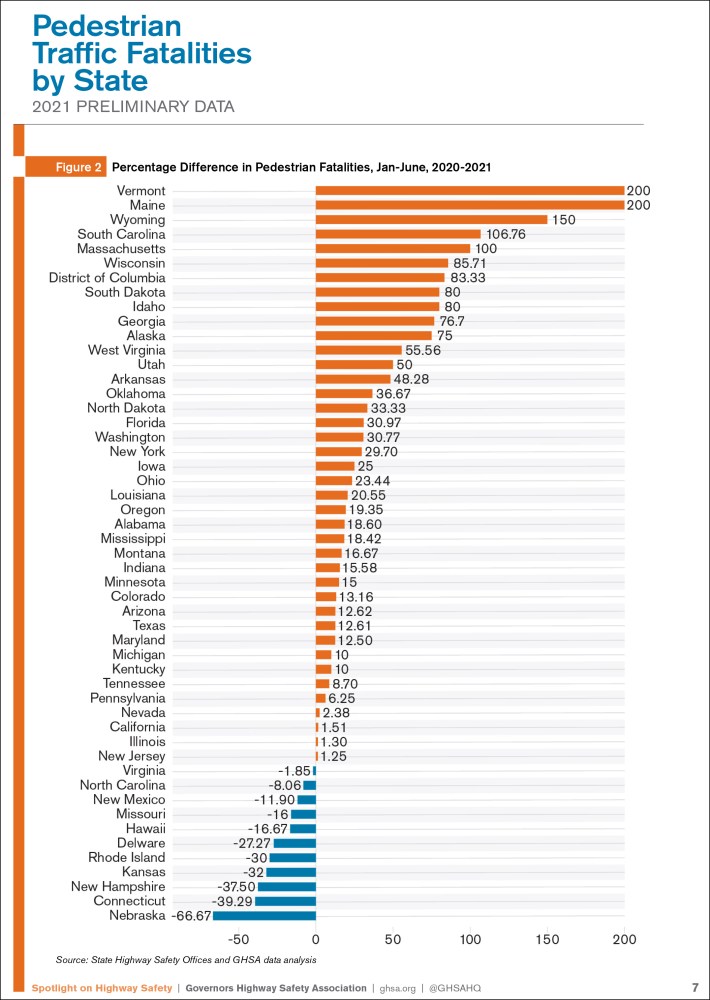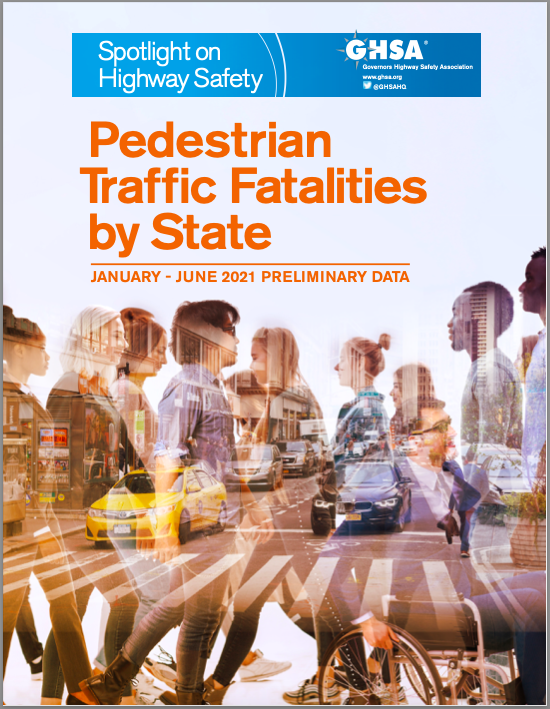The decade-long pedestrian death crisis has worsened, with a double-digit percentage increase in deaths caused by U.S. drivers — and experts are blaming it on speeding, distracted driving, larger vehicles and roads that prioritize car drivers over everyone else.
The Governors Highway Safety Association crunched the latest numbers for its annual Spotlight on Highway Safety report, and found the news is grim:
- Drivers struck and killed 3,441 pedestrians in the first six months of 2021, up 17 percent from the same period one year earlier. The increase amounts to 507 more lives lost under the wheels of cars than the same period in 2020.
- Only 11 states had decreases in pedestrian deaths in the first six months of 2021, while 39 states and the District of Columbia experienced increases.
- There were 1.04 pedestrian deaths per 100,000 people, up from .90 in 2019 and 2020. That's a 15.5-percent increase.
- Another measure of pedestrian deaths — the number of deaths per billion miles traveled — is also up, from 2.2 deaths per billion VMTs in the first half of 2020 to 2.3 deaths per billion VMTs in the same period of 2021. Both numbers were significantly up from the steady rate of 1.8 to 1.9 that the Governors Highway Safety Association chronicled for 2017 through 2019.

It's the first look at the period from January through June of 2021. The report is based on preliminary data provided by all 50 state and D.C. highway safety offices. In addition, the National Highway Traffic Safety Administration reported in February that 31,720 people died in crashes in the first three quarters of 2021, the most in that period since 2006.
The data suggest that major changes need to be made — just as similar data have made the same suggestions for years. Pedestrian deaths have been rising consistently; in 2011, there were 4,457 pedestrian deaths. By 2020, there were 6,516 — a 46-percent increase.
“Walking is the most basic form of transportation, but there is a pedestrian safety crisis due to drivers speeding, being impaired or distracted, or engaging in other dangerous behaviors,” GHSA Executive Director Jonathan Adkins said in a statement. “We need to leverage everything that works — infrastructure improvements, changes to road design, equitable enforcement of traffic safety laws and community outreach — to reverse this deadly trend and make our roadways safe for people walking, biking and rolling.”
Adkins's office pointed out that there was a surge in dangerous driving at the start of the pandemic in 2020, but it has not abated. The GHSA blamed larger vehicles, inadequate sidewalk infrastructure (including lighting) and "roads designed to prioritize fast-moving traffic over slower speeds that are safer for pedestrians."
In a slight change to its prior position, the GHSA now says it supports solutions based on the "Safe System approach," which seeks to improve road design and make changes beyond merely hoping to improve driver behavior. In the recent past, GHSA has been all-in on driver behavior, but has been increasingly leaning towards the more systematic approach, which the U.S. Department of Transportation has been pushing under President Biden. Others have sought to blame pedestrian behavior.
“There’s broad agreement that the behavioral interventions have a place, and the importance of road design and speed management has been really devalued,” said Leah Shahum of the Vision Zero Network. “We already see too many education campaigns supported by public dollars that are really just putting the blame on people walking for their own deaths, because they’re not, say, wearing bright enough clothes or carrying a flashlight. That’s really inappropriate, and honestly, it’s dangerous.”
Looking at the state level, 39 states experienced increases in pedestrian deaths in the first half of 2021. Three states with 27 percent of the U.S. population – California, Florida and Texas – accounted for 37 percent of all pedestrian deaths. The GHSA said that the disparity may be a result of warmer climates that encourage traveling by foot.
Only three states — Hawaii, Nebraska and Virginia — reported two consecutive years of declines in pedestrian deaths.







